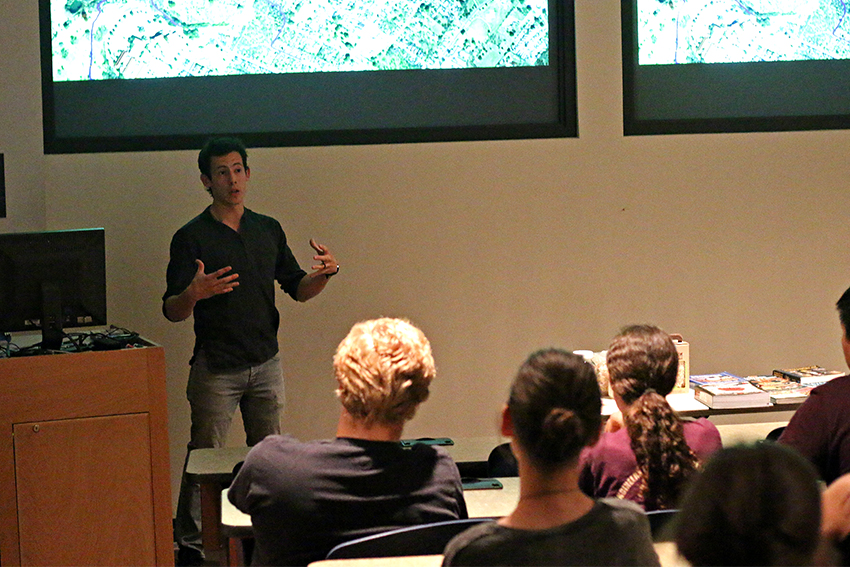UT alumnus Daniel Reyes has found one solution to oil spills, pollution and unfiltered water: mushrooms.
As an environmental consultant at Leggette, Brashears & Graham, Inc., Reyes experienced firsthand the detrimental effect of oil spills on the environment. He decided to use fungi, which have the natural ability to break down matter, to clean up the harmful contaminants. In 2015, Reyes founded the nonprofit Myco Alliance in order to research and develop different methods of testing and cultivating fungi.
He spoke last Thursday at an event hosted by UT Engineers For a Sustainable World about mycology, or the study of fungi.
In his talk, Reyes said although people have been growing mushrooms for thousands of years, mycology is a fairly new field.
“People used to associate fungi with plants,” Reyes said. “It wasn’t until 1969 that fungi was reclassified as a separate kingdom. There are over five million species of fungi, but we know about less than 10 percent of them.”
One application of mycology is mycoremediation, which uses fungi to remove pollutants from the environment. Reyes said mycoremediation focuses on the branch-like part of a fungus called the mycelium, which absorbs nutrients from its environment. Current research at Myco Alliance involves inserting mycelium from different species of fungi into contaminated systems to identify which best breaks down particular toxins.
Civil engineering sophomore Savanna Smith said last semester ESW helped build an outdoor classroom at Myco Alliance’s research site. She said she hopes the organization can work with Reyes to study mycofiltration, another application of mycology that uses fungi to filter water.
“I’m trying to start a mycofiltration project next semester to improve the water quality of Waller Creek and Shoal Creek,” Smith said. “My end goal is to find a solution that can be adapted on all the storm water drains on campus. This could affect a large volume of water.”
Reyes agrees Austin should adapt mycofiltration into the city’s infrastructure.
“It’s estimated that one cubic inch of soil contains eight miles of mycelium,” Reyes said. “Along with the fact that it can actively consume bacteria, mycelium make perfect filters for water. Pollutants are often transferred and flushed into our local creeks, affecting the quality of some of our favorite waterways.”
Reyes said because there is so much about mycology that is unknown, he and others have to educate themselves.
“When it comes to citizen science, I think this is a field that can really be developed by everyday people,” Reyes said. “All the material you need to cultivate mushrooms, you can buy from Amazon.”















